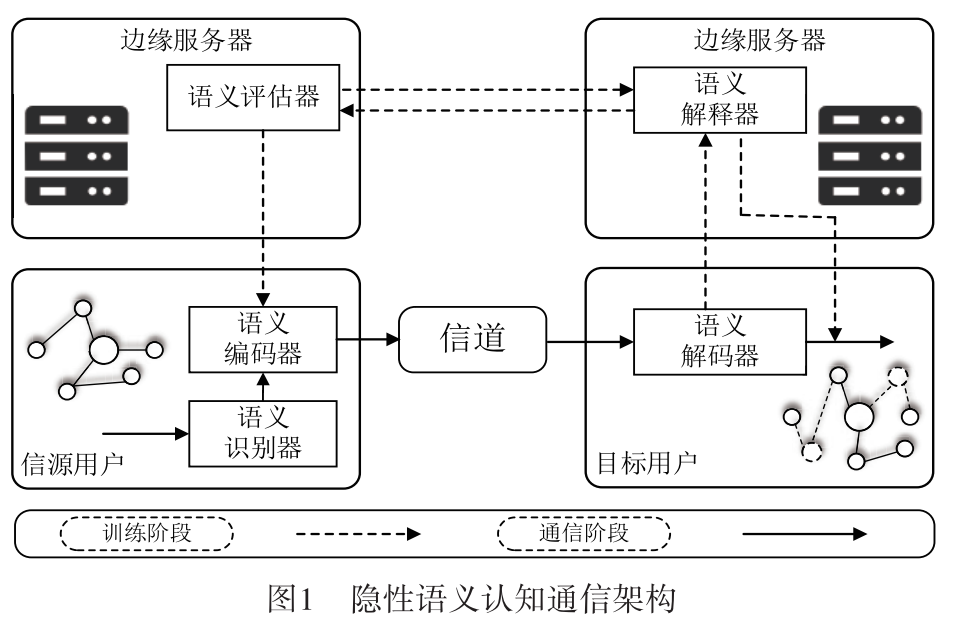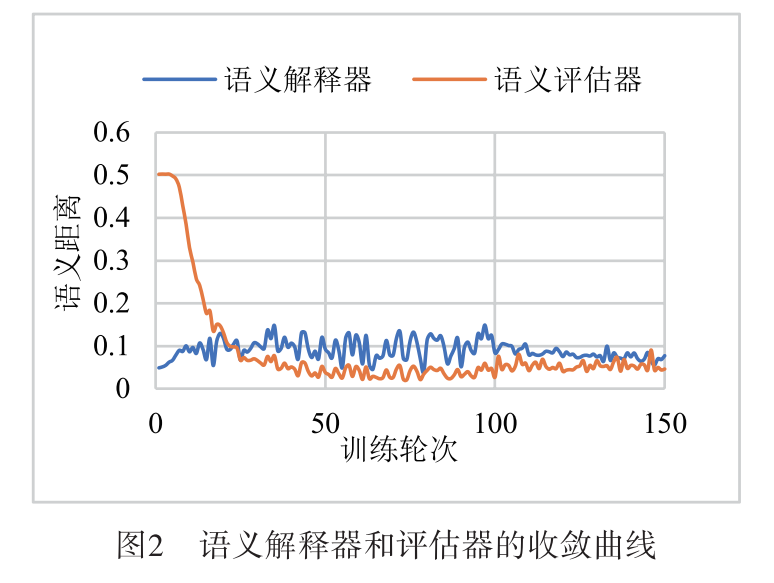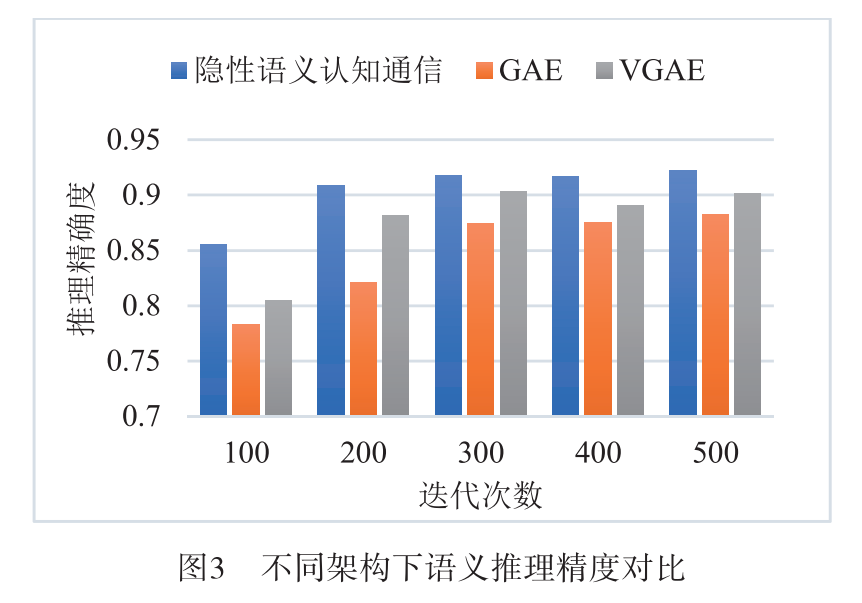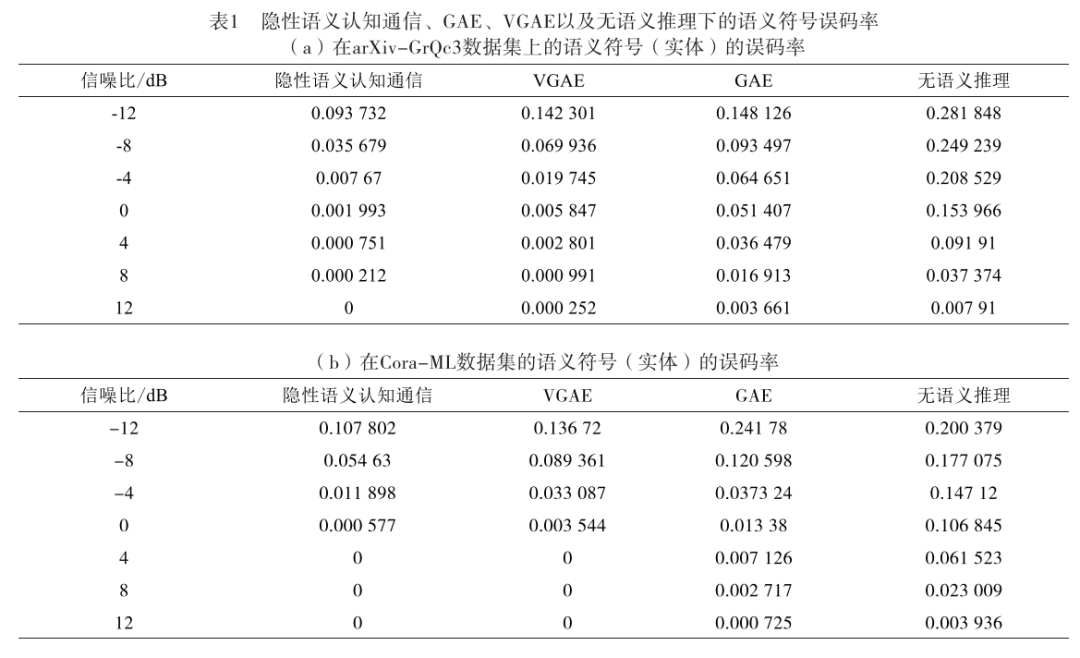Table of Contents | 2023 Issue 4 Special Topic: Semantic Communication
Semantic Communication Systems for 6G
【Semantic Communication】 Special Topic • 2《Mobile Communications》2023 Issue 4
Implicit Semantic-aware Communication for 6G AI-Native Networks*
Sun Zijian1,2, Liao Yiwei1,2, Lu Zhimin1,2, Xiao Yong1,2,4, Shi Guangming1,3,4, Gao Dahua1,3
(1. Pengcheng Laboratory, Shenzhen, Guangdong 518055;
2. School of Telecommunications, Huazhong University of Science and Technology, Wuhan, Hubei 430074;
3. School of Artificial Intelligence, Xidian University, Xi’an, Shaanxi 710071;
4. Pazhou Laboratory (Huangpu), Guangzhou, Guangdong 510335)
*Funding Projects: National Natural Science Foundation of China “Research on the Basic Theory of Group Intelligent Resource Sharing Game for 6G” (62071193); National Natural Science Foundation of China “Research on Computational Imaging Methods for Intelligent Semantic Understanding” (61976169); National Natural Science Foundation of China “Research on the Basic Theory and Methods of Semantic Communication” (62293483); National Natural Science Foundation of China “Research on High-resolution High Dynamic Range Infrared Imaging Methods Based on Multi-channel Compressed Sensing” (61871304); Major Project of Pengcheng Laboratory (PCL2021A12)
【Abstract】The goal of semantic communication is to identify the meaning contained in information and convey it to the target user. This new communication paradigm based on semantic understanding can achieve efficient transmission, precise expression, and intelligent processing of information, enabling the network itself to understand user intentions and needs, thus providing more personalized and intelligent services, in line with the demand for future intelligent native communication networks. Currently, most work in the field of semantic communication focuses on transmitting explicit semantics directly identified from source signals (such as labels and signal features). This paper studies the problem of implicit semantic communication and proposes an implicit semantic-aware communication architecture for intelligent native networks, which transmits and recovers implicit semantics by conveying the implicit relationships that cannot be identified from the source signal along with their associated semantic information to the target user. Unlike traditional communication, which aims to maximize the total amount of communication, this architecture aims to help the receiving end learn an implicit semantic reasoning rule automatically generated based on limited information. Under this architecture, the receiving end user can always learn reasoning rules that match those of the source user. Experimental results show that the proposed architecture significantly improves the symbol error rate for target users, outperforming existing non-reasoning communication solutions.
【Keywords】Intelligent Native; Semantic Communication; Implicit Semantic-aware Communication
doi:10.3969/j.issn.1006-1010.20230327-0002
Classification Number: TN92 Document Code: A
Article Number: 1006-1010(2023)04-0007-07
Reference Format: Sun Zijian, Liao Yiwei, Lu Zhimin, et al. Implicit Semantic-aware Communication for 6G AI-Native Networks[J]. Mobile Communications, 2023, 47(4): 7-13.
SUN Zijian, LIAO Yiwei, LU Zhimin, et al. Implicit Semantic-aware Communication for 6G AI-Native Networks[J]. Mobile Communications, 2023, 47(4): 7-13.

0 Introduction
The IMT-2030 6G Promotion Group’s “6G Network Architecture Vision and Key Technology Outlook White Paper” points out that one of the important visions of 6G is to achieve intelligent native networks based on a significant enhancement of network capabilities, focusing on user and network needs, timely allocating and providing various resources and services to meet the complex and diverse needs of human users. In other words, future networks will no longer just be pipelines for transmitting data, but will be able to recognize, perceive, and understand the semantics contained in different users, devices, scenarios, and environments, dynamically orchestrating and coordinating network structures and resources according to changes in the environment and user needs, providing users with more immersive and personalized intelligent information services. Thus, the deep integration of semantic cognition and communication technology will become an important foundation for the next generation of intelligent native communication networks and will drive the transformation of communication network architecture from a traditional data-driven paradigm to a semantic-driven paradigm.
Research in cognitive psychology indicates that the human brain typically focuses on the meaning of information, i.e., semantics, rather than the specific details of the information when memorizing event information or processing language or visual information. Coincidentally, recent research in neuroscience has also shown that the processing of semantics, including semantic recognition, transmission, and reasoning, is one of the decisive characteristics of human behavior. It is not only the cornerstone of complex language systems but also lays the foundation for humans’ ability to utilize knowledge in learning, reasoning, and solving complex problems. Inspired by this, communication technology based on semantic cognition will no longer focus on how to preserve the fidelity of raw data or signals in communication, but rather on identifying, transmitting, and utilizing the key meanings embedded in the transmitted messages during the communication process, enabling efficient and accurate semantic transmission between communication entities. Meanwhile, semantic communication and semantic cognitive network architectures will provide technical support for resource sharing and intelligent interaction among massive intelligent devices and users in future networks, laying the foundation for achieving intelligent interconnectivity of all things under 6G and the intelligent cognition, learning, decision-making, and self-evolution of the network itself.
Despite the significant attention semantic communication has received from academia and industry, most existing work on semantic communication primarily focuses on identifying and transmitting explicit semantic information in messages, which can be directly observed and extracted from signals. However, according to the original definition of semantics and the latest research findings in cognitive neuroscience, semantic information includes not only explicit semantics; implicit semantics, which refers to meanings or rules that are not explicitly stated but are implied within the semantic information, also plays a more important role in semantic recognition, communication, and achieving information conveyance.
Recent research in cognitive neuroscience indicates that implicit semantics play an important role in human information communication. Humans can express rich semantics with very few words, which is achieved by combining words with different relationships according to different rules, where these rules embody implicit semantics. Furthermore, the communication, learning, and reasoning abilities of human users are closely related to their ability to establish connections between unknown and known knowledge. Inspired by this, implicit semantic-aware communication technology can better identify users’ reasoning preferences, understand their true intentions, and provide more personalized intelligent services by separately extracting and reasoning about explicit and implicit semantics in signals, as well as perceiving and analyzing user backgrounds and communication histories. Therefore, studying and incorporating implicit semantic information into the semantic communication architecture is crucial for realizing the next generation of human-centered communication network systems with advanced semantic communication capabilities and cognitive intelligence.
This paper primarily investigates the problem of implicit semantic communication, with the core objective of proposing a solution to infer implicit semantics from explicit semantics. Specifically, the main contributions of this paper are as follows: (1) Introduction of a representation model for implicit semantic information, which reflects the set of observable explicit semantics, the implicit semantics inferred from explicit semantics, and the reasoning rules that reflect user reasoning habits; (2) Proposal of an implicit semantic-aware communication architecture for intelligent native networks, where the goal of the source user is no longer to maximize the amount of information transmitted in the channel, but to help the target user at the receiving end learn a reasoning rule that can automatically infer all implicit semantic information based on the received partial information, such as the partially or fully identified explicit semantic information by the sender.
In the following sections, we will first review the relevant research achievements in the field of intelligent native and semantic communication in recent years; secondly, we will elaborate on the proposed general architecture for implicit semantic communication and provide an in-depth analysis of its functional modules and principles; finally, we will model and simulate implicit semantic-aware communication, and the simulation results will demonstrate its performance in recognizing and transmitting implicit semantic information.
1 Related Work
1.1 Related Work in the Field of Intelligent Native Networks
Recent works by many researchers have effectively reflected the importance of semantic communication technology in constructing intelligent native communication networks. The authors in reference [17] proposed a hierarchical semantic communication system for the aforementioned two-layer communication problem and analyzed the boundaries of semantic information compression from an information-theoretic perspective, while pointing out that semantic communication technology will be an effective solution to promote the intelligent native of communication networks. Reference [18] discussed how to organically combine semantic communication with edge computing, including semantic communication systems deployed at the edge and edge intelligent networks driven by semantic communication technology, emphasizing how these two technologies will play important roles in the efficient intelligence of future networks. Reference [19] introduced semantic-level information in the process of air interface design and envisioned a future communication architecture driven by AI technology that can be applied to any hardware, wireless environment, and application. The authors in reference [20] provided a detailed introduction to the technologies and challenges that may be encountered in the extraction, transmission, and evaluation of semantic information in semantic communication technology, and listed possible application scenarios of semantic communication technology in the context of intelligent native communication networks, such as smart transportation, holographic imaging, and collaborative robots.
1.2 Related Work in the Field of Semantic Communication
Existing work related to semantic communication can be roughly divided into three categories: information-theoretic based, machine learning based, and cognitive neuroscience inspired.
(1) Information-theoretic based semantic communication
The authors in reference [21] proposed a method for measuring semantic information by analogizing the measurement of information based on binary symbols in Shannon’s theory. Building on this, the authors in reference [22] further explored the quantification of semantic information and semantic coding, with preliminary results demonstrating the feasibility of data compression and reliable communication from a semantic perspective. Inspired by the idea that semantic information can be learned and evolved during human communication, the authors in reference [23] introduced game-theoretic analysis modeling into semantic information theory, analyzing semantic communication problems from the perspective of strategic communication. They used auxiliary information to model the advantages brought by background knowledge and environmental factors involved in semantic communication, theoretically clarifying the bandwidth savings that semantic communication can achieve compared to traditional communication.
(2) Machine learning based semantic communication
Recently, the powerful capabilities of machine learning, especially those based on deep neural network (DNN) algorithms, have been applied to solve semantic communication problems. Existing research has mostly focused on the representation, recognition, computation, and communication of explicit semantics (such as human manually labeled tags and features related to samples). For example, the authors in reference [24] proposed a semantic communication system for text transmission and measured semantic differences at the word and sentence levels. For image transmission, reference [15] adopted a generative adversarial network-based image semantic coding method, capable of sending and reconstructing images at extremely low bit rates through its proposed semantic communication system. Additionally, the authors in reference [25] developed a semantic communication system based on attention mechanisms, which can identify and transmit key information in speech signals under dynamic channel environments in telephone systems. Furthermore, reference [26] proposed a semantics-native communication (SNC) model for combining contextual general reasoning tasks to address semantic information that changes over time and in different contexts.
(3) Cognitive neuroscience inspired semantic communication
Recent research in cognitive neuroscience indicates that humans can infer complex implicit semantics based on limited explicit semantic information. Inspired by this, the authors in reference [23] derived theoretical constraints on the transmission of implicit semantics in communication channels based on rate-distortion theory. In addition, the authors in reference [27] modeled the implicit semantic reasoning of the source user as a reinforcement learning process and proposed a method based on imitation learning, allowing the target user to estimate the reasoning strategy of the source user and derive all possible reasoning paths based on the principle of maximum causal entropy.
This paper proposes an implicit semantic-aware communication architecture for intelligent native networks, enabling the target user to directly learn a simplified approximate reasoning rule of the source user, thus achieving accurate transmission of semantic information between both parties.
2 Implicit Semantic Communication Model
2.1 Representation of Implicit Semantics
As mentioned earlier, the semantics of information should include observable explicit semantics as well as related implicit semantics. In this paper, the semantic information of a given message is defined as a triplet χ=<s,us,π>, where s represents the set of explicit semantic information, us represents the set of implicit semantic information closely related to explicit semantics s (including hidden relationships and associated hidden semantic information), and π represents the reasoning rules that reflect the potential connections between explicit and implicit semantic information.
(1) Explicit semantics
s refers to the set of explicit semantics (such as labels or features) that can be directly identified from the message.
(2) Implicit semantics
Implicit semantic information us cannot be directly observed from the source signal and must be inferred based on communication history and the reasoning preferences of the source user. represents the set of all possible explicit semantic information that the source user can express. Assuming all relationships are undirected, each element in us can be linked to some element in s through specific relationships. Therefore, us can represent the set of implicit semantic information related to s. Let
represents the set of all possible explicit semantic information that the source user can express. Assuming all relationships are undirected, each element in us can be linked to some element in s through specific relationships. Therefore, us can represent the set of implicit semantic information related to s. Let  represent the set of all possible implicit semantic information related to s. Due to the inherent uncertainty of language and the common occurrence of polysemy, it is difficult to determine the implicit semantic information related to a specific explicit semantic information. Therefore, implicit semantic information is represented in probabilistic form, i.e., for
represent the set of all possible implicit semantic information related to s. Due to the inherent uncertainty of language and the common occurrence of polysemy, it is difficult to determine the implicit semantic information related to a specific explicit semantic information. Therefore, implicit semantic information is represented in probabilistic form, i.e., for  and
and  ,
,  represents the probability of inferring implicit semantic information us based on the observed explicit semantics s.
represents the probability of inferring implicit semantic information us based on the observed explicit semantics s.
(3) Reasoning rules
As previously mentioned, reasoning rules describe the potential associations between explicit and implicit semantics. The reasoning rules of the source user are denoted as π(·), which represents a mapping function that maps given explicit semantic information s to the probability distribution of all possible implicit semantics. Assuming that this probability distribution is deterministic, and for  there is
there is  , where
, where  is the probability of inferring us based on the reasoning strategy π when observing s. Meanwhile, it is assumed that both the source user and the target user do not have access to the real reasoning rules, but the source user can observe an expert sample set, which is a collection of implicit semantic information generated by the source user in communication history.
is the probability of inferring us based on the reasoning strategy π when observing s. Meanwhile, it is assumed that both the source user and the target user do not have access to the real reasoning rules, but the source user can observe an expert sample set, which is a collection of implicit semantic information generated by the source user in communication history.
2.2 Functional Modules of Implicit Semantic Communication
Implicit semantic communication mainly consists of the following key functional modules:
(1) Semantic Recognizer: Used to extract explicit semantic items from raw information. For example, when the raw information is an image or sound, existing recognition algorithms (such as YOLO and wav2letter) can serve as semantic recognizers to extract labels or features of objects from the raw information.
(2) Semantic Encoder: Used to convert the extracted semantic information into a format suitable for physical transmission. In traditional semantic communication models, the sender typically has two types of encoders: semantic (source) encoder and channel encoder. The former aims to reduce the redundancy of semantic information, while the latter increases certain redundancy to improve robustness in communication under noise.
(3) Semantic Decoder: Used to restore the noisy explicit semantic information transmitted through the channel at the receiving end. In traditional semantic communication, the main task of the receiving end is to recover all semantic information extracted by the sender’s semantic recognizer. In this paper, the introduction of implicit semantic communication means that new functional modules need to be introduced, allowing the receiving end to restore explicit semantic information while inferring implicit semantic information.
(4) Semantic Interpreter: Used to automatically infer all implicit semantic information from the noisy information received by the receiving end and provide it to the target user. The goal of the semantic interpreter is to learn an approximation of the reasoning rules π(·) of the source user based on communication history, context, and other auxiliary information.
To evaluate semantic communication, especially the transmission effect of implicit semantics, a semantic distance metric is proposed. The main goal of the semantic communication system is to minimize the gap between the semantics restored at the target user end and the semantics at the sender end. This gap is defined as semantic distance. Based on the previous description, the goal is to enable the target user to learn a semantic reasoning rule that approximates that of the source user, minimizing the semantic distance.
In the next section, we will introduce the implicit semantic-aware communication architecture for intelligent native networks and how to address the aforementioned issues through generative adversarial methods.
3 Implicit Semantic-aware Communication Architecture
The implicit semantic-aware communication architecture is shown in Figure 1:

3.1 Semantic Distance
Based on the content described in the previous section, the goal of this paper is to learn a semantic reasoning rule at the target user end that approximates that of the source user, minimizing the semantic distance between the two. According to the content in section 2.1, the reasoning rule of the target user is defined as the probability distribution from the explicit semantics received by the target user to possible implicit semantics. Similarly, the reasoning rule of the source user is defined as the probability distribution of implicit semantics inferred by the source user based on the real reasoning rules and the observed explicit semantics. The semantic distance between the two can be measured using methods that assess the difference in probability distributions, such as cross-entropy.
3.2 Description of the Implicit Semantic-aware Communication Architecture
In this section, we introduce the implicit semantic-aware communication architecture for intelligent native networks, which allows the source user to assist the target user in learning semantic inference rules, enabling the sender to only transmit the explicit semantics extracted from the source signal, while the receiving end can automatically infer the underlying implicit semantics. To achieve this, a new component—semantic evaluator—is innovatively introduced at the sender end, which compares the implicit semantics inferred by the receiving end with the implicit semantics inferred by the sender based on real reasoning rules and feeds back the comparison results to the semantic interpreter for updating the reasoning rules. The training and communication phases of the implicit semantic-aware communication architecture are described as follows:
Training Phase: The purpose of the training phase is for the source user to assist the target user in training the semantic reasoning rules. First, the semantic decoder at the receiving end sends the explicit semantic information received and restored from the channel to the semantic interpreter deployed on the edge server; then, the semantic interpreter generates implicit semantic information closely related to the obtained explicit semantic information based on the current reasoning rules and local knowledge base; subsequently, the semantic interpreter outputs the implicit semantic information and sends it back to the semantic evaluator deployed on the edge server at the sender end, which compares the received implicit semantic information with the implicit semantic information generated by the source user based on real reasoning rules; finally, the comparison results are fed back by the semantic evaluator to the semantic interpreter, which updates the reasoning rules based on the feedback results; the above steps will be repeated until the semantic interpreter at the receiving end can generate implicit semantic information that approximates that produced by the sender based on real reasoning rules, i.e., the semantic distance between both parties reaches a minimum. The specific implementation method is as follows:
(1) Semantic Encoder/Decoder
The main function is the mutual conversion between explicit semantic information and signals for physical transmission. For example, a source-channel mixed encoder/decoder can be used to process the observable explicit semantic information in the signal.
(2) Receiving End Semantic Interpreter
The main function is to learn reasoning rules and generate relevant implicit semantic information based on the explicit semantic information restored at the receiving end through the current reasoning rules. A parameterized mapping can be used as the semantic interpreter, such as a Graph Neural Network (GNN), which takes the obtained explicit semantic information as input and outputs the probability distribution of the most likely implicit semantics. This network can update its parameters based on the defined semantic distance through stochastic gradient descent (SGD).
At the beginning of training, the semantic interpreter can only randomly output implicit semantics, and this output will be fed back to the semantic evaluator for comparison with expert samples to obtain semantic distance, which will be used to update the parameters of the semantic interpreter. In subsequent iterations, the semantic interpreter outputs the most likely implicit semantics each time, and after obtaining the semantic distance, it updates the network parameters using SGD. Ultimately, the training result will be a mapping that closely approximates the real reasoning rules. After training, the semantic decoder will be able to infer implicit semantics directly without additional communication load.
(3) Sending End Semantic Evaluator
The task of the semantic evaluator is to maximize the semantic distance between the given two sets of implicit semantics during the training process of the semantic decoder. In other words, it will enhance its ability to distinguish between the implicit semantics generated by the real reasoning rules and those learned by the target user. The input to the semantic evaluator is two sets of semantic information, and the output is the probability of the existence of a connection between the two sets of information. The input semantic information will be mapped to semantic vectors through a parameterized function, and the output of the semantic evaluator is the function value after the dot product of the two sets of vectors followed by a Sigmoid function activation. This parameterized mapping can be any graph representation learning algorithm, such as Graph Convolutional Networks (GCN), and its parameters are also updated through SGD. In each iteration, the semantic evaluator first receives input from the semantic interpreter, then updates its parameters using this input, and finally calculates the required semantic distance, feeding it back to the semantic interpreter for its parameter update.
Communication Phase: In the communication phase, the trained semantic interpreter will skip the feedback step and directly infer implicit semantic information based on the received explicit semantic information, significantly reducing communication and computational burdens. First, the source user identifies the explicit semantic information in the source signal and converts it into a form suitable for physical channel transmission using the trained semantic encoder; then, the target user uses the trained semantic decoder to restore the explicit semantic information from the received signal and sends it to the semantic interpreter; finally, the semantic interpreter generates implicit semantic information based on the received explicit semantic information and the trained reasoning rules and provides it to the target user.
4 Preliminary Experimental Results
4.1 Datasets and Experimental Setup
Simulations were conducted using two datasets that recorded real human knowledge, namely arXiv-GrQc3 based on citation data from arXiv and Cora-ML based on topics of machine learning papers. The former contains 5,242 nodes representing authors and 14,496 edges representing collaboration relationships, while the latter contains 2,995 nodes representing papers and 8,416 edges representing citation relationships.
All experiments were deployed on a Linux server (CPU: Intel(R) Xeon(R) CPU E5-2683  GHz, GPU: 4*NVIDIA GeForce GTX 2080Ti (11 GB)), primarily based on the Python open-source library Pytorch.
GHz, GPU: 4*NVIDIA GeForce GTX 2080Ti (11 GB)), primarily based on the Python open-source library Pytorch.
For the semantic evaluator, a two-layer GCN was designed with a learning rate of 0.001. The dimensionality of the representation vectors in both the semantic interpreter and evaluator was set to 50, and 5% to 10% of the connections in the dataset were randomly used to simulate standard samples of implicit semantics.
4.2 Experimental Results
The performance of implicit semantic-aware communication is evaluated by comparing it with the following two schemes:
(1) Variational Graph Auto-encoder (VGAE) scheme: Implicit semantics are first recognized by the semantic recognizer, then transformed into low-dimensional graph embeddings through GCN, and subsequently transmitted through the physical channel. The semantic interpreter also uses GCN to reproduce the complete implicit semantic information based on the noisy graph embeddings.
(2) Graph Auto-encoder (GAE) scheme: Essentially the same as VGAE, except that the semantic interpreter is based on the Sigmoid function rather than GCN.
First, consider the convergence of the implicit semantic-aware communication architecture. Figure 2 shows the output values of the loss function (semantic distance function) trained on the arXiv-GrQc3 dataset, indicating that the semantic interpreter and evaluator in the proposed architecture can always converge with each other.

Figure 3 shows the inference accuracy of the three architectures, indicating that the accuracy of the proposed architecture is always higher than the other two, especially at 100 iterations, where its accuracy reaches 86.01%, surpassing GAE and VGAE by 8.22% and 5.40%, respectively.

Moreover, the reasoning rules learned by the receiving end are also applicable to semantic information damaged in the transmission channel. Table 1 compares the semantic symbol (entity) error rates of the implicit semantic-aware communication, GAE, and VGAE learning rules under different signal-to-noise ratios (SNR) in the arXiv-GrQc3 and Cora-ML datasets. It can be observed that in both datasets, from low SNR to high SNR, the proposed architecture consistently outperforms the other three comparative schemes in terms of error rates.

5 Conclusion
This paper introduces a new communication paradigm of semantic communication, which is expected to transform traditional data-driven communication networks into a new generation of intelligent native communication networks centered on user experience. It reviews existing research related to intelligent native and semantic communication, highlighting the key role of implicit semantics in achieving semantic communication technology. Consequently, it presents the implicit semantic-aware communication architecture for intelligent native networks and its performance in perceiving and transmitting the semantic information expressed by the source user.
Currently, semantic communication technology is still in its early stages, and fundamental theories and technologies related to the representation, encoding, reasoning, and multi-user collaboration of semantic information still require further exploration and improvement. Only through in-depth discussions and collaborative efforts among peers in academia can its further development be promoted, advancing the next generation of communication technology towards more efficient, energy-saving, and intelligent directions.
References:(Scroll to browse)
[1] Aazhang B , Ahokangas P , Alves H , et al. Key drivers and research challenges for 6G ubiquitous wireless intelligence (white paper)[R]. 2019.
[2] IMT-2030(6G) Promotion Group. 6G Overall Vision and Potential Key Technologies[R]. 2021.
[3] Xiao Y, Shi G, Li Y, et al. Towards Self-learning Edge Intelligence in 6G[J]. IEEE Communications Magazine, 2020,58(12): 34-40.
[4] Xiao Y , Hirzallah M , Krunz M . Distributed Resource Allocation for Network Slicing over Licensed and Unlicensed Bands[J]. IEEE J. Sel. Area Commun., 2018,36(10): 2260-2274.
[5] Yang Y, Ma M, Wu H Q, et al. 6G network ai architecture for everyone-centric customized services[J]. IEEE Network, 2022.
[6] Saad W, Bennis M, Chen M. A vision of 6G wireless systems: Applications, trends, technologies, and open research problems[J]. IEEE Network, 2019: 1-9.
[7] Liu G, Huang Y, Li N, et al. A vision of 6G wireless systems: Applications, trends, technologies, and open research problems[J]. IEEE Network, 2019:1-9.
[8] Anderson J R, Jane C. Cognitive psychology and its implications[M]. San Francisco: wh freeman, 1980.
[9] Jeffrey R. Binder, Rutvik H. Desai, William W. Graves and Lisa L. Conant. Where Is the Semantic System? A Critical Review and Meta-Analysis of 120 Functional Neuroimaging Studies[J]. Cerebral Cortex, 2009,19(12): 2767-2796.
[10] Shi G, Xiao Y, Li Y, et al. From Semantic Communication to Semantic-Aware Networking: Model, Architecture, and Open Problems[J]. IEEE Communications Magazine, 2021,59(8): 44-50.
[11] Shi Guangming, Xiao Yong, Li Yingyu, et al. Semantic Communication Networks for Intelligent Interconnectivity of All Things[J]. Journal of Internet of Things, 2021,5(1): 12-36.
[12] Bourtsoulatze E, Kurka D B, Gunduz D. Deep Joint Source-Channel Coding for Wireless Image Transmission[C]//IEEE Transactions on Cognitive Communications and Networking. IEEE, 2019,5(3): 567-579.
[13] Zhang H, Shao S, Tao M, et al. Deep learning-enabled semantic communication systems with task-unaware transmitter and dynamic data[J/OL]. arXiv: 2205.00271, 2002. [Online]. https://arxiv.org/abs/2205.00271.
[14] Xie H, Qin Z, Li G Y, et al. A lite distributed semantic communication system for internet of things[C]//IEEE J. Sel. Area Commun., 2020,39(1): 142-153.
[15] Huang D, Tao X, Gao F, et al. Deep learning-based image semantic coding for semantic communications[C]//IEEE GLOBECOM. IEEE, 2021.
[16] Santhanavijayan A, Naresh Kumar D, Deepak G. A semantic-aware strategy for automatic speech recognition incorporating deep learning models[J]. Intelligent System Design, 2021,1171: 247-254.
[17] Niu K, Dai J, Yao S, et al. A Paradigm Shift toward Semantic Communications[J]. IEEE Communications Magazine, 2022,60(11): 113-119.
[18] Yang W, Liew Z Q, Lim W Y B, et al. Semantic communication meets edge intelligence[J]. IEEE Wireless Communications, 2022,29(5): 28-35.
[19] Hoydis J, Aoudia F A, Valcarce A, et al. Toward a 6G AI-Native Air Interface[J]. IEEE Communications Magazine, 2021,59(5): 76-81.
[20] Yang W T, Du H Y, Qin Z, et al. Semantic Communications for Future Internet: Fundamentals, Applications, and Challenges[J]. IEEE Communications Surveys & Tutorials, 2022,25(1): 213-250.
[21] Carnap R, Bar-Hillel Y. An outline of a theory of semantic information[J]. Res. Lab. Elctron., Massachusetts Inst. of Technol., 1952: 247.
[22] Bao J, Basu P, Dean M, et al. Towards a theory of semantic communication[C]//2011 IEEE Network Science Workshop. IEEE, 2011.
[23] Xiao Y, Zhang X, Li Y, et al. Rate-distortion theory for strategic semantic communication[C]//IEEE Information Theory Workshop. IEEE, 2022.
[24] Guler B, Yener A, Swami A. The semantic communication game[J]. IEEE Transactions on Cognitive Communications and Networking, 2018,4(4): 787-802.
[25] Weng Z, Qin Z. Semantic communication systems for speech transmission[J]. IEEE Journal on Selected Areas in Communications, 2021,39(8): 2434-2444.
[26] Seo H, Park J, Bennis M, et al. Semantics-native communication with contextual reasoning[J/OL]. arXiv, Aug. 2021. [Online]. Available: https://arxiv.org/abs/2108.05681.
[27] Xiao Y, Sun Z, Shi G, et al. Imitation learning-based implicit semantic-aware communication networks: Multi-layer representation and collaborative reasoning[J]. IEEE J. Sel. Areas Commun., 2023,41(3).
[28] Goodfellow I. Generative adversarial nets[J]. Proc. of the NIPS, 2014,27.
[29] O’shea T, Hoydis J. An introduction to deep learning for the physical layer[J]. IEEE Transactions on Cognitive Communications and Networking, 2017,3(4): 563-575.
[30] Kipf T N, Welling M. Semi-supervised classification with graph convolutional networks[C]//Proceedings of the International Conference on Learning Representations. Toulon, France, Apr. 2017. ★
★ Scan the QR code to read and download this paper on CNKI

★ Originally published in 《Mobile Communications》 2023 Issue 4 ★
doi:10.3969/j.issn.1006-1010.20230327-0002
Classification Number: TN92 Document Code: A
Article Number: 1006-1010(2023)04-0007-07
Reference Format: Sun Zijian, Liao Yiwei, Lu Zhimin, et al. Implicit Semantic-aware Communication for 6G AI-Native Networks[J]. Mobile Communications, 2023, 47(4): 7-13.
SUN Zijian, LIAO Yiwei, LU Zhimin, et al. Implicit Semantic-aware Communication for 6G AI-Native Networks[J]. Mobile Communications, 2023, 47(4): 7-13.
 Author Information
Author Information
Sun Zijian (orcid.org/0009-0001-3170-9333): PhD student at Huazhong University of Science and Technology, research interests include network artificial intelligence and next-generation communication technologies.
Liao Yiwei: PhD student at Huazhong University of Science and Technology, research interests include semantic communication, knowledge reasoning, and graph neural networks.
Lu Zhimin: Master’s student at Huazhong University of Science and Technology, research interests include semantic communication and next-generation communication technologies.
Xiao Yong (orcid.org/0000-0003-3230-8758): Professor at Huazhong University of Science and Technology, Deputy Leader of the Network Intelligence Direction of IMT-2030(6G) Promotion Group, Deputy Director of the 5G Co-creation Industry Application Development Laboratory, Senior Member of IEEE, Senior Member of China Communications Society, Associate Editor of IEEE Transactions on Mobile Computing, research interests include network artificial intelligence, edge computing, communication network game theory, etc.
Shi Guangming: Yangtze River Scholar Distinguished Professor (2012-2017), Second-level Professor at Xidian University, PhD supervisor, Leading Professor of the AI School, enjoys special government allowances. IEEE/IET Fellow, Fellow of the China Electronics Society, Senior Member of the Artificial Intelligence Society. Main research interests include semantic communication, brain-like perception, compressed sensing, computational imaging, machine learning, EEG information processing, and brain-inspired intelligent technology, awarded the National Natural Science Second Prize (2017) as the first contributor.
Gao Dahua: Professor and PhD supervisor at the School of Artificial Intelligence, Xidian University, recognized as a “Young Science and Technology Star” in Shaanxi Province, main research interests include intelligent computing imaging and intelligent information processing, leading over 10 projects including the National Key R&D Program and National Natural Science Foundation, published over 30 papers related to intelligent computing imaging, and authorized over 10 international and domestic patents.
Submission Method for 《Mobile Communications》 is Online Submission
Please log in to the web submission system
Link Address:http://ydtx.cbpt.cnki.net
 HighlightsTable of Contents | Call for Papers for 2023 Issue 5 Special Topic: 6G Terahertz Communication Technology Call for Papers | 2023 Issue 8 Special Topic: New Technologies for IoT Aimed at 6G Call for Papers | 2023 Issue 9 Special Topic: 6G Intelligent Perception Call for Papers | 2023 Issue 10 Special Topic: Mobile Self-organizing Networks Call for Papers | 2023 Issue 11 Special Topic: 6G Intelligent Metasurface Technology Call for Papers | 2023 Issue 12 “Internet of Vehicles Special Topic”2023 Special Plan for 《Mobile Communications》【2023 Issue 1 Paper Collection】 Special Topic: 5G Core Network
HighlightsTable of Contents | Call for Papers for 2023 Issue 5 Special Topic: 6G Terahertz Communication Technology Call for Papers | 2023 Issue 8 Special Topic: New Technologies for IoT Aimed at 6G Call for Papers | 2023 Issue 9 Special Topic: 6G Intelligent Perception Call for Papers | 2023 Issue 10 Special Topic: Mobile Self-organizing Networks Call for Papers | 2023 Issue 11 Special Topic: 6G Intelligent Metasurface Technology Call for Papers | 2023 Issue 12 “Internet of Vehicles Special Topic”2023 Special Plan for 《Mobile Communications》【2023 Issue 1 Paper Collection】 Special Topic: 5G Core Network # Scan to follow us #《Mobile Communications》 interprets communication through papers
# Scan to follow us #《Mobile Communications》 interprets communication through papers
《Mobile Communications》 magazine is supervised by China Electronics Technology Group Corporation and hosted by the Seventh Research Institute of China Electronics Technology Group Corporation. It is a “Double Effect Journal” in the Chinese journal matrix, a boutique electronic journal of the Ministry of Industry and Information Technology, a source journal for Chinese scientific and technological papers, and included in the “High-quality Scientific and Technological Journals Grading Directory” by the China Association for Science and Technology, and a journal included in JST of Japan. Domestic continuous publication number: CN44-1301/TN, International continuous publication number: ISSN1006-1010, Postal distribution code: 46-181.